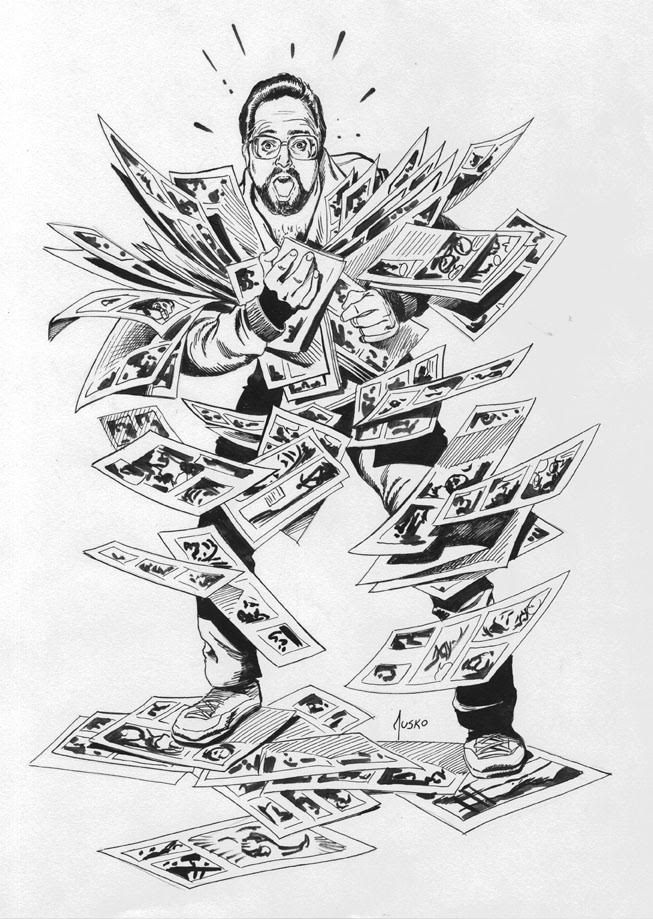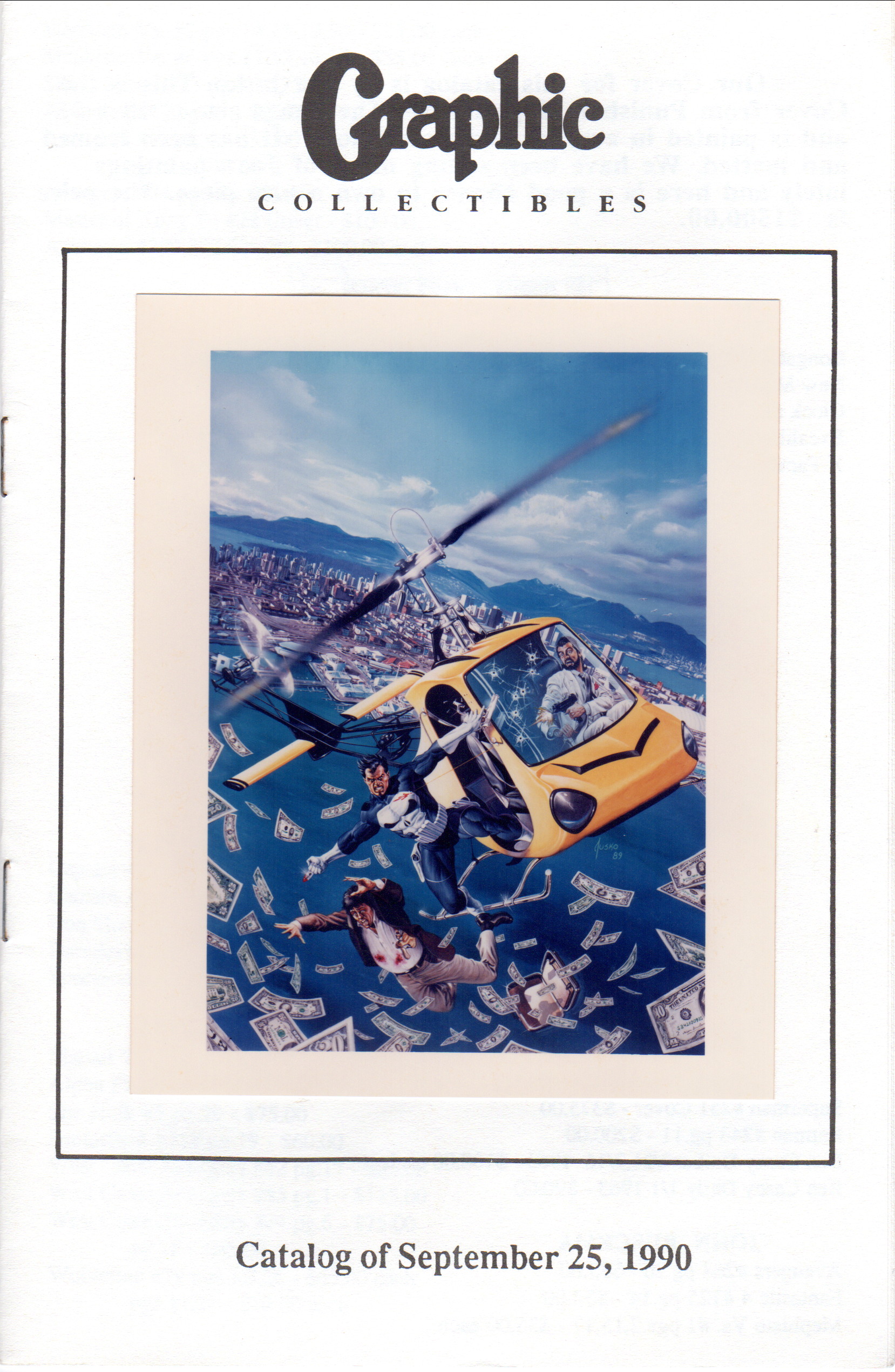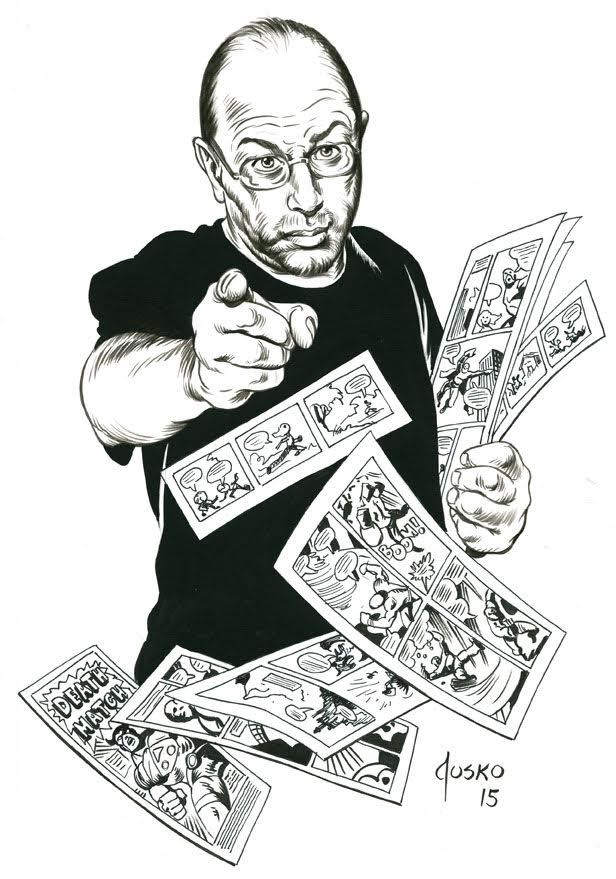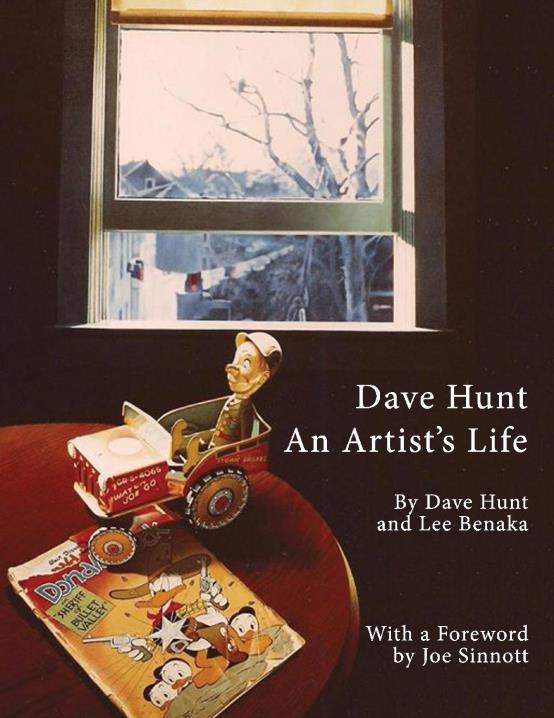Mitch Itkowitz interview
 Mitch Itkowitz, proprietor of Graphic Collectibles (www.graphiccollectibles.com), is the patron saint of this website. Mitch's well-designed catalogs with sharp images of comic art are perfect for scanning. I bought some of my earliest pieces of comic art from Mitch back in the mid-1990s, including my first George Perez and Gene Colan comic pages. I remember my excitement as a budding art collector in receiving a list of Gene Colan Daredevil art that Mitch sent to my work fax machine. Mitch has a long history with original comic art and knows a lot of things, and I thought he would be the perfect person to kick off the ComicArtAds interivew series. This interview was conducted via email in January 2017.
Mitch Itkowitz, proprietor of Graphic Collectibles (www.graphiccollectibles.com), is the patron saint of this website. Mitch's well-designed catalogs with sharp images of comic art are perfect for scanning. I bought some of my earliest pieces of comic art from Mitch back in the mid-1990s, including my first George Perez and Gene Colan comic pages. I remember my excitement as a budding art collector in receiving a list of Gene Colan Daredevil art that Mitch sent to my work fax machine. Mitch has a long history with original comic art and knows a lot of things, and I thought he would be the perfect person to kick off the ComicArtAds interivew series. This interview was conducted via email in January 2017.
Where did you grow up?
I was born in Brooklyn in 1956. I lived there till mid-1968, and then I moved to Queens. I moved to Jackson, NJ, in June 1970. I lived there until December 1975, when I moved to the Bronx. There, I lived in a one-bedroom apartment with four other enthusiastic comic book fans. In the meantime, I worked in downtown Manhattan, literally across the World Trade Center, from midnight until 8:00 in the morning. I moved into my own apartment in Manhattan on 85th Street in June 1976.
Did you read comics as a child? If so, what comics did you like?
My father used to bring comics home almost every night for me during around 1960-1964. I remember reading the classic story “Robin Dies at Dawn” on the living room couch, as well as the first “New Look” Batman comics. Although my father would bring home all types of comics, I gravitated to the superhero genre.
When, and under what circumstances, did you see your first piece of original comic book art?
My parents would let me travel by bus from Jackson, NJ, to Manhattan for the Phil Seuling July 4th Comicon in 1972-1973. I remember a table there was stacked with pages from Tower Comics books (THUNDER Agents, NoMan, Dynamo, and so on). I had no interest in the art at that time, but it was hard to miss that table.
Did you have any mentors, or were you influenced by anyone, as you began your career as an art dealer?
My friend and roommate at the time, Ken Gale, as well as some other friends, put on a two-day show in Manhattan called “Fireball Con” in the Summer of 1976. It might have been in May. I was in charge of getting art from artists to auction for Muscular Dystrophy. A little while after that show, after I moved to my own apartment, I got the idea to sell comic art, on the side, since I had a full-time job. I contacted two other art collector friends, Tim (forgot his last name), and Charley Hawse (RIP). We became, soon after, in late July 1976, MTC Enterprises. This lasted for a couple months or so, as the other two lived in New Jersey, which made it difficult for them to come in all the time for meetings, or to talk to artists. We disbanded, and I simply became “Original Art Gallery.”

Were the Original Art Gallery catalogs the first catalogs you published?
Yes. I think the first catalog was in 1977, with a couple of ads that might date back to late 1976.
Why did you begin to alternate between larger-format and smaller-format Graphic Collectibles catalogs in the mid-1980s?
Prior to the mid-1980s, my catalogs were more sporadic. Beginning in the mid-1980s, I decided that since I had so much art, publishing catalogs monthly would mean having to change the format for mailing. Larger format catalogs cost more to print and mail. I still produced large format catalogs, mostly for illustration art, and a separate catalog for limited edition prints, back in 1989.
What kind of production process was required for you to create nearly monthly catalogs with very high-quality images?
Oy, it was time-consuming. I bought a higher end copier machine just for the catalogs. I would take a standard size comic art page, then reduce it twice to get it to 3-to-3.5 inches. Then I’d sit down at my desk, cut the images out, and paste them down to art grid boards. Then I’d go to my computer for the text, and I would have to cut and paste each description. This was before scanners. I would mail the boards to a printer, and a week later, I would have printed catalogs. After a while I found a printer up here in Saugerties, which cut the production time down to 3-4 days.
Where did you get the art for your catalogs, that is, did you have arrangements with certain artists to sell their art as they received it back from publishers?
Most of the art came from artists, and some from other collectors. In some cases I would go to Marvel and DC and pick up the artists’ share of the art. The pros of this arrangement were that I dealt with a lot of good people, and the cons were that I had to deal with some not-so-pleasant artists.

What comic artists have you represented over the years, and what have been the pros and cons of representing artists?
I have represented Dick Giordano, Neal Adams, John Byrne, Joe Jusko, Tim Sale, Brian Stelfreeze, Adam Hughes, Jason Pearson, Cully Hamner, Glen Orbik, Howard Chaykin, Klaus Janson, John Romita Sr., Norm Breyfogle, Rob Liefeld, and so many more. The aforementioned artists were absolutely wonderful to work with. I miss Dick Giordano especially. He was the first artist I ever repped, and he became a good friend.
Have you been surprised by the values of particular artists’ art over time, either in terms of how much it has appreciated or depreciated?
I’m continually surprised at prices, in how they escalate so quickly. But this is a nostalgic business (and don’t ever let anyone tell you it isn’t a business), and supply and demand will cause prices to go up.
When had a personal comic art collection, what were some of your prized pieces?
Ghad! If I had kept the collection till now, I would be able to retire. I had the Sekowsky JLA #22 cover, Infantino Flash #123 splash, Kirby FF #67 cover, Lou Fine Jungle #1 Cover, Starlin Marvel calendar original, Ditko Spider-Man and Dr. Strange splashes, Infantino Flash covers. Really too much to remember.
Why did you decide to stop collecting original comic art?
As prices escalated and I had a family, collecting was not a priority anymore. It was more important for me to provide for my family.
When and why did you begin to focus on illustration art, as an art dealer?
I had always dabbled in illustration art from the beginning. I remember selling a large J.C. Leyendecker charcoal illustration to Alfredo Alcala, when he was living in New York City, back in 1977. I took it on a bus from my apartment down to the “NY Tribe” apartment down in the East 20s. It was huge, and I was horribly embarrassed to be carrying it on the bus. I’ve been selling illustration more steadily for the last 20 years or so.
Did any of your catalog subscribers have unusual strategies to get ahold of your catalogs before other collectors?
Of course, everyone wanted to get the catalog first, much like today at the San Diego Comic Con, when everyone comes to my booth and wants to be first to go through everything. I’ve had collectors who wanted to pay for Fed Ex or express mail delivery for my catalogs, but I never gave into them.
 Why did you stop publishing monthly comic art catalogs in 2000?
Why did you stop publishing monthly comic art catalogs in 2000?
The internet made the catalogs obsolete. I was the first art dealer to have a web site for comic art. It was very rudimentary, but it served the purpose of what the catalog used to do.
Russ Cochran issued a somewhat desperate plea for consignments a year or so ago, and you sent a similar, but less-desperate, email message to the comic art collecting community not long after.
I felt so bad for Russ. He’s been selling art longer than me, and it just doesn’t seem right that he had to put that plea out there. With all the art that’s out there, he shouldn’t have had to put out that plea. I did send him some art for that auction. To understand why I sent my less-desperate plea, you have to know the reason behind it. Because San Diego is the only show I exhibit at, I like to have a large selection of fresh-to-the-market original art, that is, art that hasn’t been shopped around from dealer to auction house to dealer and so on. Or art that has been sitting in dealers’ booths for years, not selling while the prices keep rising. After I sent out that email message, I had a large response from collectors who consigned to me, specifically for the show. And because of the email message, I still get consignments. I thank them all. It is greatly appreciated. I think I’ve done a great job of acquiring fresh art for the show. 2017 will be my 40th year of exhibiting at San Diego.
What do you see in your future as a comic art dealer, and what makes you stand out compared to your competition?
What’s makes me stand out from my “competition” is that I don’t represent 100 artists, many of which don’t work in the business. Because I’ve been in business over 40 years, longer than anyone else, and only represent one artist part-time, I don’t have thousands of pages, and anyone who consigns to me will get treated well, and the same as any other consignor. Their art won’t get lost in the mix of thousands of pages in inventory. Less is more. Where do I see myself for the future? I want to keep getting consignments from all the wonderful collectors out there, and I want to be known as the “Dinosaur of the Art Dealers.”

